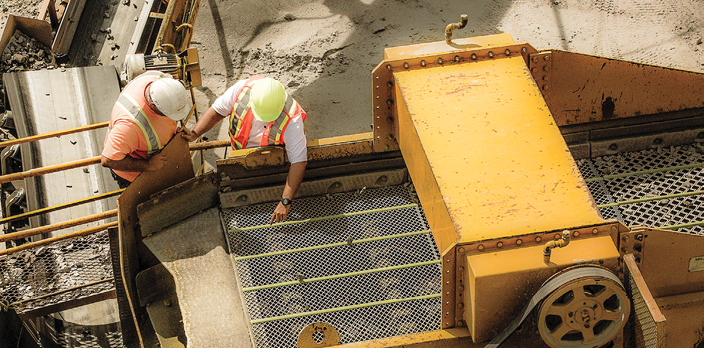Beginning 2023 with spring start-up in mind
Now that 2022 has officially ended, starting the new year off on the right foot does not have to be stressful. To optimize your screening capabilities, a little bit of forethought goes a long way to help reduce downtime and increase efficiency. The key to a successful start-up is ensuring the equipment is as close to OEM specifications as possible. This guarantees the longest periods of uninterrupted productivity. This process does not have to wait until the spring. You can begin right now.

To help you achieve this, we have compiled the following tips:
1. Thoroughly inspect all equipment and perform any necessary maintenance
Taking time during winter shutdown to inspect equipment and make repairs and replacements speeds up the spring start-up process. It is important to work through the same maintenance checklist again when spring rolls around. Simply assuming equipment remains in optimum condition leads to unforeseen downtime and lost production. Double checking helps ensure vibrating screens are ready for operation when the first load of material arrives.
Key inspection points:
Substructure
> Examine all parts for cracks, wear, and other issues. This includes crown bars and screen ledges.
> Perform any necessary welding or maintenance.
> To ensure proper and consistent tension along the entire length of the deck, a crown curve is necessary. A simple rope test can be used to check that it is intact. Run a piece of rope from one side of the vibrating screen to the other. With a proper crown curve, each support bar contacts the rope, forming a continuous arch from wall to wall. Likewise, during operation the screen panels will lay firmly on the supports.
> Replace crown rubber with urethane to help increase productivity. Urethane lasts a full season while rubber needs to be replaced with every changeout.
Exterior drive components
> Inspect springs and V-belts and other components for cracks and signs of wear. This includes shiny, rusty, or sharp surfaces on metal parts.
> Perform necessary repairs and replacements.
Chutes and feed pans
> Examine for signs of wear such as shiny or rusty spots on metal surfaces. If the metal is too thin, dimples will also be evident on the underside.
> Inspect welds for wear and make any necessary repairs.
> Consider adding urethane or rubber lining on wear points to extend longevity.
2. Ensure availability of essential parts to reduce downtime
The beginning of the year is a good time to consider communicating with dealers and distributors to guarantee parts availability for the upcoming year and determine what parts to keep on hand. Keeping a well-stocked supply of essential parts on hand helps reduce downtime during unscheduled maintenance. This includes critical spares, such as screen media, as well as consumables, such as bearings, belts, and other accessories.
For screen media, it is important to review production numbers and determine your core media usage. From there, work with your dealer to ensure screen media is available when you need it. We recommend having at least two changeouts available: one on site and one with the dealer or OEM.
3. Perform a vibration analysis to establish a baseline for the year
Vibration analysis technology – like the Flex-Mat sensor – is a great tool for early identification of maintenance issues. It allows operators to monitor and avoid unexpected breakdowns with real-time evaluations, helps address improper settings, and accurately measures changes.
Vibration analysis is less effective without a baseline for comparison. Spring start-up is the best time to record this reference point for the year. Schedule quarterly visits with your dealer to monitor the machine’s performance. The initial data can also be used to make sure your screen is running as close to OEM specifications as possible.
Ready for a strong start for 2023
To increase productivity and profits, make sure your equipment is in optimal condition before the first tonne is processed.
Matthew Armstrong is a business development analyst at Major.
Comments